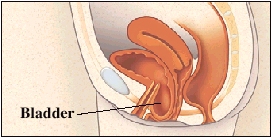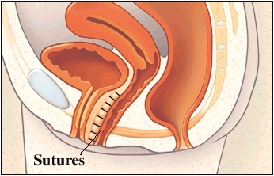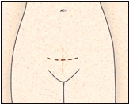Pelvic Organ Prolapse: Surgery for Cystocele
Pelvic Organ Prolapse: Surgery for Cystocele
Cystocele occurs when the bladder sags (prolapses) into the vagina. The goal of surgery is to repair the problem. This will help relieve your symptoms. Your surgery may include one or more repairs.
The surgical procedure
Cystocele can be treated with surgery done through the vagina. The sagging bladder is moved back into its normal position. Sutures (stitches) are placed in tissue between the bladder and the vagina. This helps hold the bladder in place. In some cases, another type of surgery is done. It can help correct weakness in the front wall of the vagina. The vagina is attached to strong tissues in the side wall of the pelvis.
Your incisions
During surgery, the doctor will reach your pelvic organs through the vagina or the abdomen. An incision may be made in the vaginal wall. Surgery through the abdomen may be done with a single incision made up and down (vertically) or across (transverse), or through several small incisions (called laparoscopy).
Possible risks and complications of this surgery
Infection
Bleeding
Risks of anesthesia
Damage to nerves, muscles, or nearby pelvic structures
Blood clots
Prolapse of the pelvic organ or organs occurring again
Updated:
December 08, 2017
Reviewed By:
Goode, Paula, RN, BSN, MSN,Sacks, Daniel, MD, FACOG



